
Kalamaloué National Park: A Hidden Gem in Cameroon
Discover the untouched beauty of Kalamaloué National Park in Cameroon, where diverse wildlife, stunning landscapes, and rich cultural experiences await.
Nestled in the northern part of Cameroon, Kalamaloué National Park is a captivating destination for nature lovers and adventure seekers. Spanning over 45,000 hectares, this park offers a unique blend of savannah, woodlands, and wetlands, home to a diverse array of wildlife. From elephants and hippos to numerous bird species, Kalamaloué National Park is a haven for wildlife enthusiasts. The park's serene landscapes provide an ideal setting for game drives, bird watching, and nature walks. The diverse flora and fauna make it a perfect spot for photographers looking to capture Africa's raw beauty. In addition to its natural allure, Kalamaloué National Park holds cultural significance. The nearby villages offer a glimpse into the traditional lifestyles of local communities. Visitors can engage with the locals, learn about their customs, and even participate in traditional ceremonies. This blend of natural and cultural experiences makes a visit to Kalamaloué National Park truly unforgettable.
Local tips in Kalamaloué National Park
- Visit during the dry season from November to April for the best wildlife viewing opportunities.
- Hire a local guide to enhance your experience and ensure you don't miss any hidden gems.
- Bring binoculars and a camera with a good zoom lens for bird watching and wildlife photography.
- Wear comfortable clothing and sturdy shoes suitable for walking and exploring the terrain.
- Don't forget insect repellent and sun protection, as the park's climate can be harsh.
- Respect local customs and traditions when visiting nearby villages to ensure a positive cultural exchange.
Kalamaloué National Park: A Hidden Gem in Cameroon
Nestled in the northern part of Cameroon, Kalamaloué National Park is a captivating destination for nature lovers and adventure seekers. Spanning over 45,000 hectares, this park offers a unique blend of savannah, woodlands, and wetlands, home to a diverse array of wildlife. From elephants and hippos to numerous bird species, Kalamaloué National Park is a haven for wildlife enthusiasts. The park's serene landscapes provide an ideal setting for game drives, bird watching, and nature walks. The diverse flora and fauna make it a perfect spot for photographers looking to capture Africa's raw beauty. In addition to its natural allure, Kalamaloué National Park holds cultural significance. The nearby villages offer a glimpse into the traditional lifestyles of local communities. Visitors can engage with the locals, learn about their customs, and even participate in traditional ceremonies. This blend of natural and cultural experiences makes a visit to Kalamaloué National Park truly unforgettable.
When is the best time to go to Kalamaloué National Park?
Iconic landmarks you can’t miss
Cameroon Reunification Monument
Discover the rich history and cultural significance of the Cameroon Reunification Monument, a symbol of unity in Yaoundé, Cameroon.

Bois Sainte Anastasie
Discover the charm of Bois Sainte Anastasie, a serene park in Yaoundé blending nature, relaxation, and authentic dining experiences.

Ayos Centre
Explore the cultural heart of Foumban at Ayos Centre, where traditional craftsmanship meets contemporary artistry in a vibrant atmosphere.

Waza National Park
Explore the breathtaking landscapes and diverse wildlife of Waza National Park, a top destination for nature lovers in Cameroon.
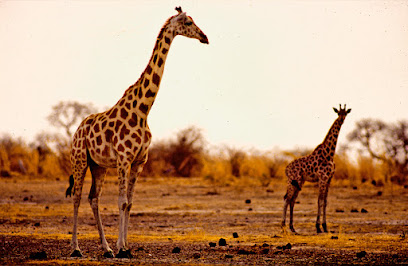
Statue of Charles Atangana
Explore the Statue of Charles Atangana in Yaoundé, a historical landmark celebrating Cameroon's rich cultural heritage and history.

Parc de la Méfou (Ape Action Africa)
Explore Parc de la Méfou, a wildlife refuge dedicated to the conservation of endangered species in Cameroon, and connect with nature in a meaningful way.

Dja Faunal Reserve
Explore Dja Faunal Reserve, a UNESCO World Heritage site in Cameroon, where lush rainforests and diverse wildlife await nature enthusiasts and adventure seekers.

I love my country Cameroon round about
Discover the vibrant heart of Yaoundé at the iconic I Love My Country roundabout, a symbol of Cameroon's cultural pride and unity.

Mount Cameroon National Park
Explore the breathtaking Mount Cameroon National Park, a paradise for hikers and wildlife enthusiasts in the heart of Cameroon.

Independence Square
Explore Independence Square in Yaoundé, a historic landmark showcasing Cameroon’s journey to independence amid stunning architecture and vibrant culture.

Campo Reserve
Explore Campo Reserve, a serene national park in Cameroon, where vibrant ecosystems and diverse wildlife await your discovery.
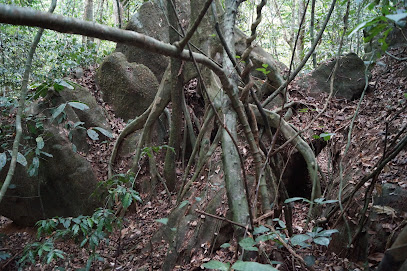
Cathédrale de la Paix
Explore the architectural beauty and cultural significance of Cathédrale de la Paix, a serene landmark of unity in Yaoundé, Cameroon.

La Nouvelle Liberté
Explore La Nouvelle Liberté, Douala's iconic landmark symbolizing resilience and cultural heritage, and capture the essence of Cameroon.
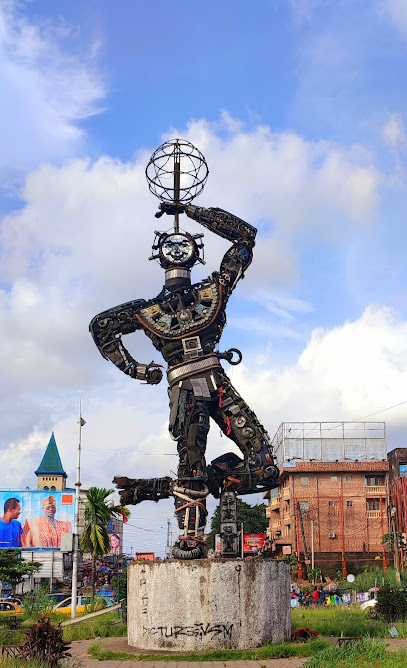
Monument j'aime mon pays
Discover the Monument j'aime mon pays in Yaoundé, a captivating landmark symbolizing Cameroonian pride and unity amidst a vibrant cultural scene.

Station Coloniale Allemande
Explore the rich heritage of Yaoundé at Station Coloniale Allemande, a landmark where history meets culture in the heart of Cameroon.

Essential places to dine
Saga Africa Restaurant - Akwa, Douala
Experience the rich flavors of Cameroon at Saga Africa Restaurant in Douala - where African meets European cuisine in a vibrant setting.

Le Safoutier Restaurant
Experience the rich flavors of Cameroon at Le Safoutier Restaurant in Yaoundé's Hilton Hotel—where culinary excellence meets elegant ambiance.

The Famous
Experience authentic Cameroonian cuisine at The Famous in Yaoundé – where every meal is a celebration of flavor and culture.

Restaurant 5 Fourchettes
Experience a fusion of local and international flavors at Restaurant 5 Fourchettes in Douala's vibrant dining scene.

Restaurant Kajazoma
Experience the exquisite blend of local flavors and international cuisine at Restaurant Kajazoma in Yaoundé - A culinary haven for every food lover.

LA MARQUISE RESTAURANT
Discover the culinary treasures of Cameroon at La Marquise Restaurant in Douala – where local flavors meet fast-food convenience.

La Salsa Restaurant
Experience authentic Cameroonian cuisine at La Salsa Restaurant in Yaoundé - a delightful fusion of flavors in a vibrant setting.

Le Plaisir du Gout
Experience authentic Cameroonian flavors and delicious pizzas at Le Plaisir du Gout – your gateway to Kribi's culinary delights.

Restaurant LES CASCADES DU MFOUNDI, Yaoundé
Discover authentic Cameroonian flavors at Restaurant LES CASCADES DU MFOUNDI in Yaoundé - where every dish tells a story.

African food by Emy
Experience authentic Cameroonian cuisine at African Food by Emy - where every dish tells a story of rich culture and flavor.

Neptune Gardens
Experience the vibrant fusion of dining and nightlife at Neptune Gardens in Douala - where every moment is unforgettable!

IYA Buea
Discover IYA Buea: A culinary haven in Buea offering rich local flavors and vibrant dining experiences amidst lively cultural settings.

Restaurant Italien-Chef Marcello
Savor authentic Italian flavors at Restaurant Italien-Chef Marcello in Yaoundé - where culinary tradition meets warm hospitality.

Sparkland Restaurant
Discover culinary excellence at Sparkland Restaurant in Buea – where local flavors meet global cuisines.

Minkan Peace Resort
Experience authentic Cameroonian cuisine at Minkan Peace Resort in Yaoundé - where tradition meets modernity in a tranquil setting.

Markets, malls and hidden boutiques
China Mall Ndokoti
Explore the vibrant shopping scene and local culture at China Mall Ndokoti, Douala's premier shopping destination for tourists and locals alike.

Agence Fokou Kousseri
Discover the best local products and essentials at Agence Fokou Kousseri, your trusted supermarket in the heart of Kousseri.

MOLLA SHOPPING
Discover the latest fashion trends at Molla Shopping in Douala, your go-to clothing store for stylish apparel and unique finds.

Kousseri
Discover Kousseri, a vibrant Cameroonian town where coffee culture meets stunning riverside views and rich local traditions.

Chadian Handicraft and Art Marketplace
Explore the Chadian Handicraft and Art Marketplace for unique souvenirs that capture the essence of Chad's rich cultural heritage and artistry.

COMPLEXE LAS VEGAS
Explore Kousseri with ease at COMPLEXE LAS VEGAS, your go-to convenience store for essentials and local treasures.

L'huile de Chebe
Explore Kousseri's L'huile de Chebe, the premier destination for authentic Chebe oils and local beauty secrets, embracing tradition and culture in every bottle.

Quartiers Zawiya
Explore Quartiers Zawiya: Kousseri's premier destination for unique, handcrafted fashion that embodies local artistry and culture.
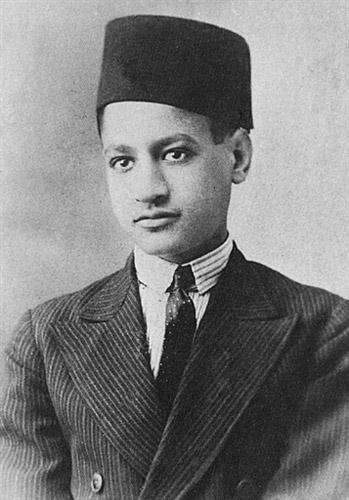
Kalamolou National Park
Explore the breathtaking landscapes and rich biodiversity of Kalamolou National Park, a serene haven for nature lovers in Cameroon.

Velo shopping
Explore the finest selection of men's clothing at Velo Shopping in Yaoundé, where style meets quality in a vibrant shopping experience.

Zourgane Boutique
Explore Zourgane Boutique in N'Djamena for unique collectibles and handcrafted treasures that celebrate the rich culture of Chad.

Soum Soum Maroquinerie
Discover exquisite leather craftsmanship at Soum Soum Maroquinerie, a boutique in N'Djamena, Chad, offering unique and authentic Chadian leather goods.

Kalamaloue National Park
Explore the stunning landscapes and diverse wildlife of Kalamaloue National Park, a hidden gem in Cameroon perfect for nature lovers and adventure seekers.

Quartier douria
Explore Quartier Douria in Kousseri for unique gifts and local crafts that embody the vibrant culture of Cameroon.

Farnorth Cameroon
Explore the vibrant markets and rich culture of Farnorth Cameroon, a hidden gem in Kousseri offering authentic local experiences.

Essential bars & hidden hideouts
Black & White Sensation (Bastos)
Discover the vibrant nightlife of Yaoundé at Black & White Sensation, a stylish lounge offering unique drinks and a lively atmosphere in Bastos.

Lounge n Garden
Discover a culinary oasis in Douala at Lounge n Garden, where fusion flavors meet a relaxing atmosphere for an unforgettable dining experience.

Circle Club
Experience the vibrant nightlife of Yaoundé at Circle Club, a lively lounge offering delicious drinks and a welcoming atmosphere.
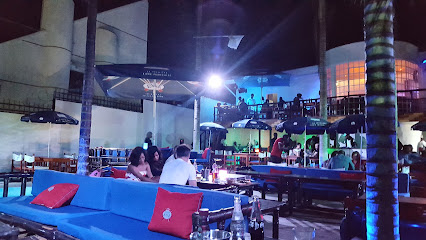
Route 66 Bar & Grill Bastos Yaounde
Discover the vibrant American flavors at Route 66 Bar & Grill in Yaoundé, where local charm meets delicious cuisine.

MACADAM BIKERS
Discover the vibrant nightlife of Yaoundé at Macadam Bikers, where good drinks and great company await in a lively atmosphere.

Bambou Lounge
Experience the vibrant nightlife and delicious cuisine at Bambou Lounge, the perfect blend of restaurant, bar, and lounge in Yaoundé.
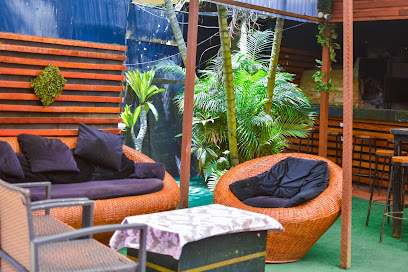
KINGDOM CAVE
Experience the rich flavors of wines from around the globe at Kingdom Cave, Douala's premier wine bar, where every sip is a journey.

Panamera Lounge
Experience the vibrant nightlife of Douala at Panamera Lounge, where trendy cocktails and lively atmosphere await.

Hotel Zenith
Experience a vibrant atmosphere at Hotel Zenith, where Kousseri's nightlife meets diverse drink selections and friendly faces.

O’Lakam
Experience the best of Douala's nightlife at O’Lakam, a cocktail bar and grill that blends modern African decor with delicious flavors.

IRISH PARK SNACK BAR AND LODGING
Experience the vibrant local culture and delicious cuisine at Irish Park Snack Bar and Lodging in Buea, Cameroon.

Panoramique Bar & Lounge
Enjoy stunning city views, exquisite cocktails, and lively entertainment at Panoramique Bar & Lounge in Yaoundé.

Makom's Lounge Bar, Bonaberi
Discover the vibrant nightlife of Bonaberi at Makom's Lounge Bar - a perfect blend of local culture and refreshing drinks in a lively setting.

Au calmozor Bar Resto
Experience the vibrant culinary scene at Au Calmozor Bar Resto in Yaoundé, offering a delightful mix of local and international dishes.

Bambe Bar
Experience the lively spirit of Kousseri at Bambe Bar, where friendly service and local culture come together for an unforgettable night out.

Local Phrases about Kalamaloué National Park
-
- HelloBoni
[boh-nee] - GoodbyeKwaheri
[kwa-heh-ree] - YesEeh
[eh] - NoAah
[ah] - Please/You're welcomeMe yie
[meh yeh] - Thank youMedaase
[meh-dah-see] - Excuse me/SorryKwasia
[kwa-see-ah] - How are you?Ete sen?
[eh-teh sen] - Fine. And you?Me ho yie. Na wo ho yie?
[meh hoh yeh. nah woh hoh yeh] - Do you speak English?Wopre yie a, wo nni English?
[woh-preh yeh ah, woh nee English] - I don't understandMe nnye asesa
[meh nee-yeh ah-seh-sah]
- HelloBoni
-
- I'd like to see the menu, pleaseMepre menu a, mesrere
[meh-preh meh-noo ah, meh-seh-reh] - I don't eat meatMe nnsi nkran
[meh nee-see en-kran] - Cheers!Afehyia pa
[ah-feh-hee-ah pah] - I would like to pay, pleaseMepre sika a, mesrere
[meh-preh see-kah ah, meh-seh-reh]
- I'd like to see the menu, pleaseMepre menu a, mesrere
-
- Help!Boa me!
[boh-ah meh] - Go away!Fata wo!
[fah-tah woh] - Call the Police!Tumi so nimpòlise!
[too-mee soh neem-poh-lee-seh] - Call a doctor!Tumi so dɔkita!
[too-mee soh doh-kee-tah] - I'm lostMe twere
[meh tway-reh] - I'm illMe bebre
[meh beh-breh]
- Help!Boa me!
-
- I'd like to buy...Mepre se...
[meh-preh seh] - I'm just lookingMe yem sra
[meh yehm srah] - How much is it?Sika a, enne yie?
[see-kah ah, en-neh yeh] - That's too expensiveHwɛ a, na yɛ yie
[hwah ah, nah yeh yeh] - Can you lower the price?Wo pɛ sika so?
[woh peh see-kah soh]
- I'd like to buy...Mepre se...
-
- What time is it?Na hwɛ ne din?
[nah hwah neh deen] - It's one o'clockNa din mmienua mu
[nah deen mee-ehn-wah moo] - Half past (10)Mmienua mmiɛnsa
[mee-ehn-wah mee-ehn-sah] - MorningAnɔpa
[ah-noh-pah] - AfternoonAwia
[ah-wee-ah] - EveningAnɔpa
[ah-noh-pah] - YesterdayNkɔso
[en-koh-soh] - TodayNkɔso
[en-koh-soh] - TomorrowNkɔso
[en-koh-soh] - 1Bere
[beh-reh] - 2Mmienua
[mee-ehn-wah] - 3Mmiɛnsa
[mee-ehn-sah] - 4Mmiɛnsa ne bere
[mee-ehn-sah neh beh-reh] - 5Mmiɛnsa ne mmienua
[mee-ehn-sah neh mee-ehn-wah] - 6Mmiɛnsa ne mmiɛnsa
[mee-ehn-sah neh mee-ehn-sah] - 7Mmiɛnsa ne mmiɛnsa ne bere
[mee-ehn-sah neh mee-ehn-sah neh beh-reh] - 8Mmiɛnsa ne mmienua
[mee-ehn-sah neh mee-ehn-wah] - 9Mmiɛnsa ne mmiɛnsa ne mmienua
[mee-ehn-sah neh mee-ehn-sah neh mee-ehn-wah] - 10Mmiɛnsa ne mmiɛnsa ne mmiɛnsa
[mee-ehn-sah neh mee-ehn-sah neh mee-ehn-sah]
- What time is it?Na hwɛ ne din?
-
- Where's a/the...?Ɛkyiri a...
[eh-chee-ree ah] - What's the address?Yɛ adirɛs mu?
[yeh ah-deh-rehs moo] - Can you show me (on the map)?Wopɛso me (map mu)?
[woh-peh-so meh (mah-poo moo)] - When's the next (bus)?Ɛkɔm de...?
[eh-kohm deh] - A ticket (to ....)Tiket a (kɔ...)
[tee-keh tah (koh)]
- Where's a/the...?Ɛkyiri a...
History of Kalamaloué National Park
-
Before the establishment of Kalamaloué National Park, the area was home to various indigenous groups, including the Fulani and Kotoko people. These communities thrived along the Logone River, utilizing its resources for fishing, agriculture, and trade. Artifacts and remnants of ancient settlements within the park's vicinity provide a glimpse into their early way of life.
-
During the late 19th and early 20th centuries, Cameroon was colonized by Germany, and later by France and Britain. The region encompassing Kalamaloué saw significant changes during this period, particularly in terms of border delineation. The Logone River, which runs through the park, became a natural boundary between Cameroon and Chad, influencing the geopolitics and movement of people in the area.
-
Kalamaloué National Park was officially established in 1972 as part of Cameroon’s efforts to protect its rich biodiversity and natural landscapes. Spanning approximately 45,000 hectares, the park was designated to conserve the unique flora and fauna of the Sahelian savanna, including species such as the Kordofan giraffe, roan antelope, and various bird species.
-
Since its establishment, Kalamaloué National Park has been the focus of numerous conservation initiatives aimed at preserving its diverse ecosystems. International collaborations and local efforts have been instrumental in research, anti-poaching activities, and community engagement. These efforts are vital for maintaining the park's ecological balance and protecting endangered species.
-
The park holds cultural significance for the local communities, who rely on its resources for livelihood and cultural practices. Traditional knowledge and customs play a crucial role in the sustainable management of the park. Community-based tourism initiatives have been developed to provide economic benefits to the local population while promoting conservation awareness.
-
Kalamaloué National Park faces various challenges, including climate change, human-wildlife conflict, and encroachment. Addressing these issues requires a multifaceted approach involving government policies, community participation, and international support. The future of the park depends on balancing conservation efforts with the needs of the local population, ensuring the preservation of its natural and cultural heritage for generations to come.
Kalamaloué National Park Essentials
-
Kalamaloué National Park is located in the far north region of Cameroon, close to the border with Chad. The nearest major city is Maroua, which is approximately 120 kilometers away. To reach Kalamaloué, you can fly into Maroua Salak Airport from Yaoundé or Douala. From Maroua, you can hire a taxi or arrange for a private transfer to the park, a journey that typically takes around 2 to 3 hours.
-
Within the park, transportation options are limited. Most visitors hire a 4x4 vehicle to navigate the park's terrain, which can be rugged and challenging. Local guides are available and highly recommended for a more enriching experience. In Maroua, taxis and motorbike taxis (known locally as ‘benskins’) are common modes of transport. For longer distances, minibuses and shared taxis operate between towns.
-
The official currency in Cameroon is the Central African CFA Franc (XAF). Credit cards are accepted in some hotels and larger restaurants in Maroua, but it is advisable to carry cash, especially when traveling to rural areas and the park itself. ATMs are available in Maroua, but it is wise to withdraw sufficient cash before heading to the park.
-
Kalamaloué National Park is generally safe for tourists, but it is essential to take standard precautions. Avoid walking alone at night and keep your belongings secure. Be cautious of pickpockets and scams, especially in crowded areas. Some regions near the border with Chad can be unstable, so stay updated on the current situation and avoid risky areas. Always travel with a local guide to ensure safety and navigation.
-
In case of emergency, dial 112 for immediate assistance. Maroua has medical facilities and police stations, but services may be limited in the park area. It is highly recommended to have travel insurance that covers medical emergencies. For minor health issues, carry a basic first aid kit and any necessary medications. Pharmacies in Maroua can provide over-the-counter medications.
-
Fashion: Do wear light, breathable clothing suitable for a tropical climate. Avoid wearing flashy jewelry. Religion: Do show respect for local customs and traditions, especially when visiting villages. Dress modestly. Public Transport: Do negotiate fares beforehand when using taxis or motorbike taxis. Don't expect strict schedules; transport operates on a more relaxed timetable. Greetings: Do greet people with a handshake and a friendly smile. Learning a few words in French or the local languages is appreciated. Eating & Drinking: Do try local cuisine and accept food offerings graciously. Don't drink tap water; always use bottled water.
-
To experience Kalamaloué National Park like a local, consider visiting during the dry season (November to March) for better wildlife viewing opportunities. Engage with local guides who can offer insights into the park's flora and fauna. Visiting the local markets in Maroua can provide a taste of the region's culture and cuisine. Participate in traditional ceremonies or festivals if the opportunity arises, as they offer a unique glimpse into local traditions.
Trending Landmarks in Kalamaloué National Park
-
Cameroon Reunification Monument
-
Bois Sainte Anastasie
-
Ayos Centre
-
Waza National Park
-
Statue of Charles Atangana
-
Parc de la Méfou (Ape Action Africa)
-
Dja Faunal Reserve
-
I love my country Cameroon round about
-
Mount Cameroon National Park
-
Independence Square
-
Campo Reserve
-
Cathédrale de la Paix
-
La Nouvelle Liberté
-
Monument j'aime mon pays
-
Station Coloniale Allemande
Nearby Cities to Kalamaloué National Park
-
Things To Do in Maroua
-
Things To Do in Maiduguri
-
Things To Do in Garoua
-
Things To Do in Yola
-
Things To Do in Ngaoundéré
-
Things To Do in Kano
-
Things To Do in Jos
-
Things To Do in Carnot
-
Things To Do in Kaduna
-
Things To Do in Foumban
-
Things To Do in Bertoua
-
Things To Do in Bamenda
-
Things To Do in Abuja
-
Things To Do in Mbouda
-
Things To Do in Bafoussam






